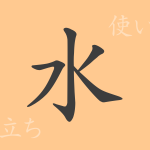One of the commonly used kanji in Japanese, ‘図’ (ず), is deeply ingrained in our daily lives. Whether looking at maps, understanding statistical data, or making plans, ‘図’ plays a crucial role in various contexts. This article delves into the origins, meanings, and usages of ‘図’, as well as its associated phrases and idioms, exploring its full scope.
Origins of 図 (ず)
The kanji ‘図’ originated from ancient Chinese pictographs. Initially representing the shape of the land drawn out, it has evolved over the years into its current form. ‘図’ encompasses not only the concept of shapes and forms but also the act of drawing or planning them, incorporating both concrete and abstract meanings.
Meaning and Usage of 図
‘図’ refers not only to concrete figures and patterns but also to plans and concepts. As a verb, ‘図る’ (はかる), it means to plot or plan something. Thus, ‘図’ can signify both visual images and abstract thoughts, making it a multifaceted kanji.
Readings, Stroke Count, and Radical of 図
‘図’ is a basic kanji taught early in school education and is known for its fundamental attributes.
- Readings: On’yomi ‘ズ’, Kun’yomi ‘はかる’
- Stroke Count: 7 strokes in total
- Radical: 囗 (かんにょう or くにがまえ)
Phrases and Idioms Using 図
Many phrases and idioms incorporate ‘図’, each enriching the Japanese language. For example, ‘図鑑’ (ずかん) is a reference book collecting various pictures and illustrations, ‘図星’ (ずぼし) refers to a guess or prediction that proves correct, and ‘図太い’ (ずぶとい) describes someone as bold and unfazed. Proverbs such as ‘一石二鳥’ (hitting two birds with one stone) and ‘胸に一物’ (むねにいちもつ ‐ having something up one’s sleeve) also use ‘図’ to convey their meanings.
Conclusion on 図
The kanji ‘図’ is versatile, spanning intuitive images to abstract concepts. Its use in Japanese, through various idioms and phrases, enhances the depth of the language. Through this article, we hope you’ve gained an appreciation for the diversity of ‘図’ and the rich history and culture it represents in the Japanese language.

























